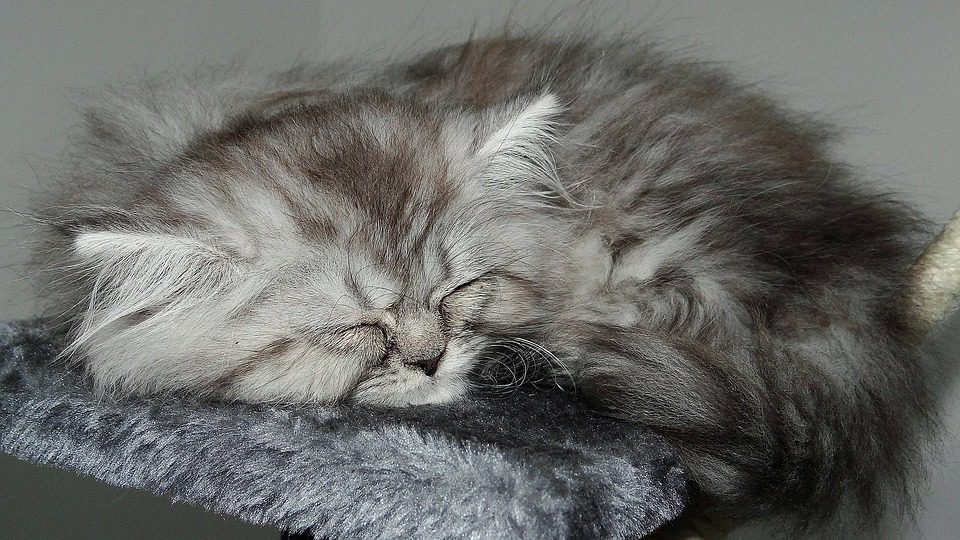Spaying a female cat is a common practice for pet owners, but have you ever wondered if the procedure changes the cat’s behavior? Many cat owners have noticed a positive change in their cats after being spayed, including a decrease in aggression, territorial marking, and overall friendliness. In this article, we’ll explore the science behind why female cats may get nicer after being spayed, as well as the benefits of the procedure.
Do Female Cats Get Nicer After Being Spayed?
Table of Contents
It is a common belief that female cats become calmer and more affectionate after being spayed. This is due to the fact that spaying eliminates the hormones associated with the cat’s heat cycles, which can lead to aggression, restlessness, and other negative behaviors. Additionally, spaying can reduce a female cat’s risk of developing dangerous reproductive conditions, such as uterine infections and cancer. In this article, we’ll take a closer look at the potential benefits of spaying a female cat and discuss the potential risks associated with the procedure.
Benefits of Spaying Female Cats
The most obvious benefit of spaying a female cat is that it eliminates the risk of unwanted pregnancy and kittens. Additionally, spaying can help to reduce aggressive behaviors, such as fighting with other cats or spraying. Since female cats can experience multiple heat cycles throughout the year, spaying can help to reduce the stress and disruption that comes with these cycles.
Spaying a female cat can also reduce her risk of developing uterine infections, which can be very serious and even life-threatening. Additionally, spaying can reduce the risk of developing certain types of reproductive cancers, such as ovarian and uterine cancer. These types of cancers can be difficult to detect, so spaying can help to reduce the risk of a female cat developing a serious illness.
Risks of Spaying a Female Cat
As with any veterinary procedure, there are potential risks associated with spaying a female cat. The most common risks associated with spaying include infection, bleeding, and pain. Additionally, there is a risk of anesthesia-related complications, such as breathing problems, allergic reactions, and even death.
There is also a risk of developing a hernia if the incision is not properly closed. Additionally, spaying can cause scar tissue to form in the uterus, which can lead to pain and discomfort. Finally, some cats may experience weight gain after being spayed, so it is important to closely monitor the cat’s diet and exercise routine.
Is Spaying Right for Your Cat?
Spaying a female cat is a major decision that should not be taken lightly. It is important to weigh the potential benefits and risks before making a decision. Additionally, it is important to work closely with a veterinarian to ensure that the procedure is performed safely and properly.
It is also important to consider the individual cat’s personality and lifestyle. If the cat lives indoors and is not exposed to other cats, the risk of developing a serious reproductive illness is much lower. In this case, it may be more beneficial to wait until the cat is at least six months old before spaying.
Ultimately, spaying can be a beneficial procedure for female cats. However, it is important to consider the potential risks and benefits before making a decision. Additionally, it is important to consult with a veterinarian to ensure that the cat is healthy and ready for the procedure.
**Common Myths About Female Cats and Spaying**
Myth 1: Female cats become less affectionate after being spayed.
This is not true. Female cats generally remain just as friendly and affectionate after being spayed. The procedure does not change the cat’s personality or temperament.
Myth 2: Spaying a female cat will make her fat.
This is also not true. After being spayed, cats should be monitored for weight gain and their diet should be adjusted accordingly. However, spaying does not automatically cause cats to gain weight.
Myth 3: Spaying a female cat is a difficult procedure.
Spaying a female cat is a relatively simple procedure. The procedure is minimally invasive and cats typically recover quickly.
Frequently Asked Questions
Do female cats get nicer after being spayed?
Yes, female cats tend to become calmer and less aggressive after being spayed. This is because spaying removes their reproductive hormones which can cause them to be more territorial and prone to fighting with other cats.
Conclusion
. Spaying a female cat can provide many benefits, such as reducing the risk of unwanted pregnancies, aggression, and certain reproductive illnesses. However, it is important to consider the potential risks associated with the procedure, such as infection, bleeding, and pain. Additionally, it is important to work closely with a veterinarian to ensure the procedure is performed safely and properly. Finally, it is important to consider the individual cat’s personality and lifestyle before making a decision.






